Rocket R Nine One: Inspecting and Cleaning the Group Head Gigleur
A low- or no-flow condition from your R Nine One's group head may result from an obstructed group head gigleur. Follow these instructions to access the gigleur for inspection and cleaning.
Tools Needed:
- 2.5mm Allen key or hex driver
- #1 Phillips screwdriver
- 17mm socket and socket wrench
- 7mm socket and socket wrench (a deep socket or socket extension may be required)
- Absorbent shop towel(s)
- Wire bristle brush or scouring pad
- Coffee equipment cleaner
NOTE: The machine should be unplugged and cool to the touch before beginning.
1. Start by removing the reservoir cover and the reservoir from the machine.
2. Unscrew the two 2.5 Allen head screws from the top panel.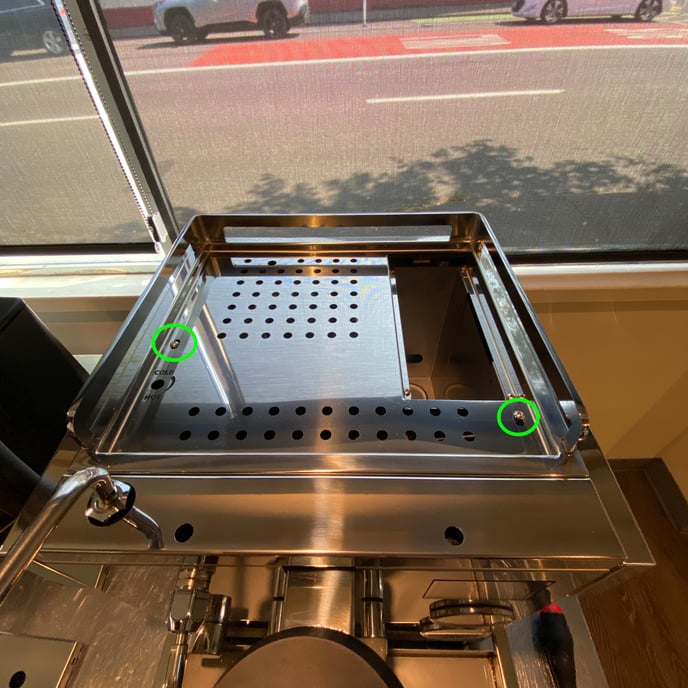
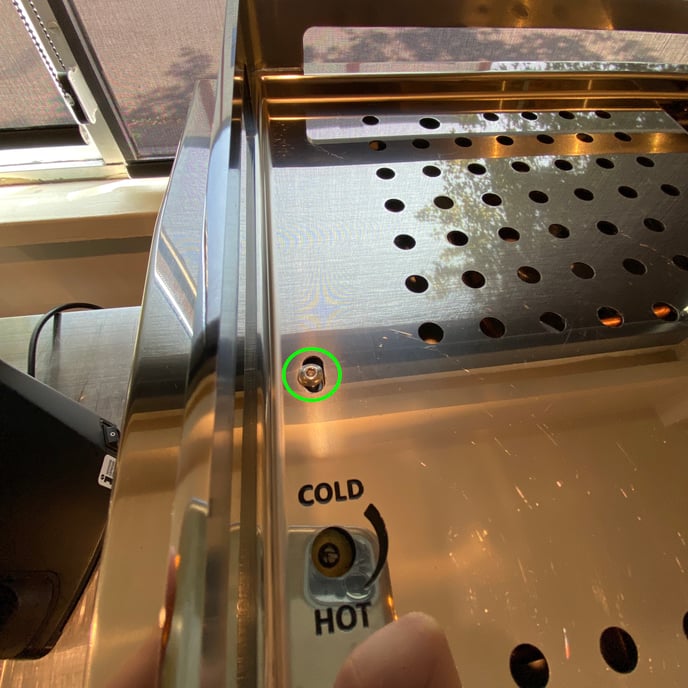
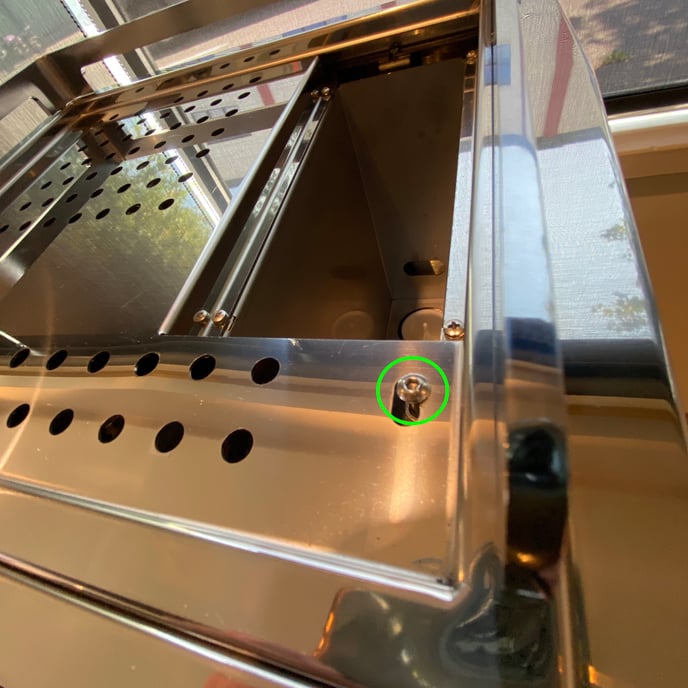
3. Use the #1 Phillips screwdriver to unscrew the four (4) small Phillips-head screws from around the reservoir window. You can now lift off the top panel and set it aside.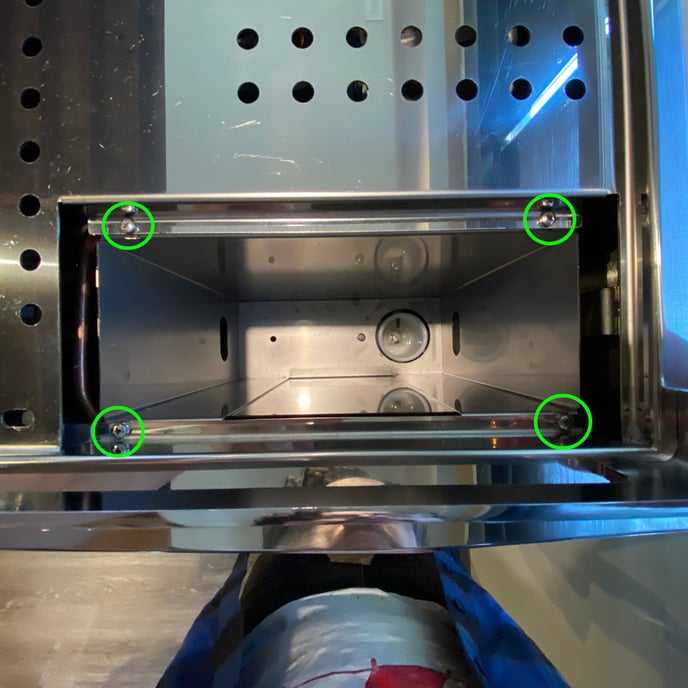
4. Identify the gigleur housing cap above the group head.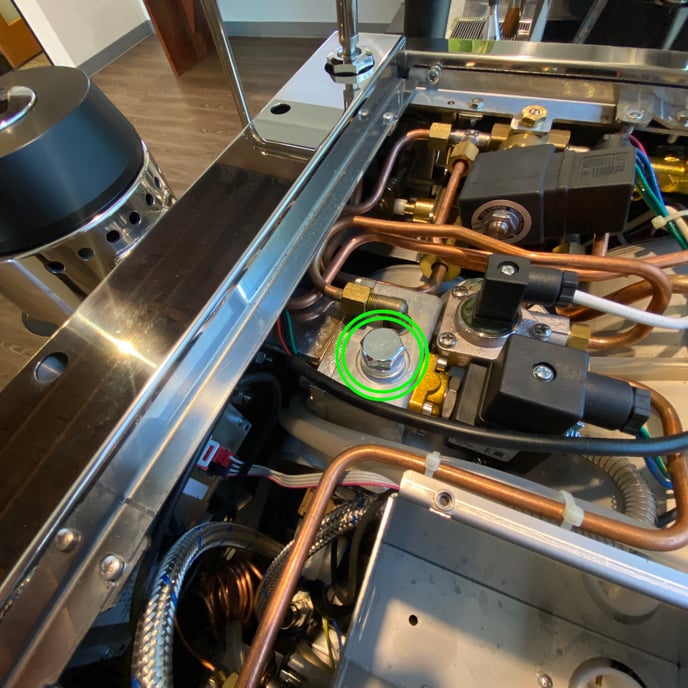
5. Place a towel along the side of the group head and coffee boiler. It's normal for a little water to leak out of the gigleur housing—we want to try to prevent it from reaching the heating element leads. It's perfectly fine if water runs down the back of the boiler, it will drain out of the bottom of the machine.
6. Use the 17mm socket to unscrew the gigleur housing cap.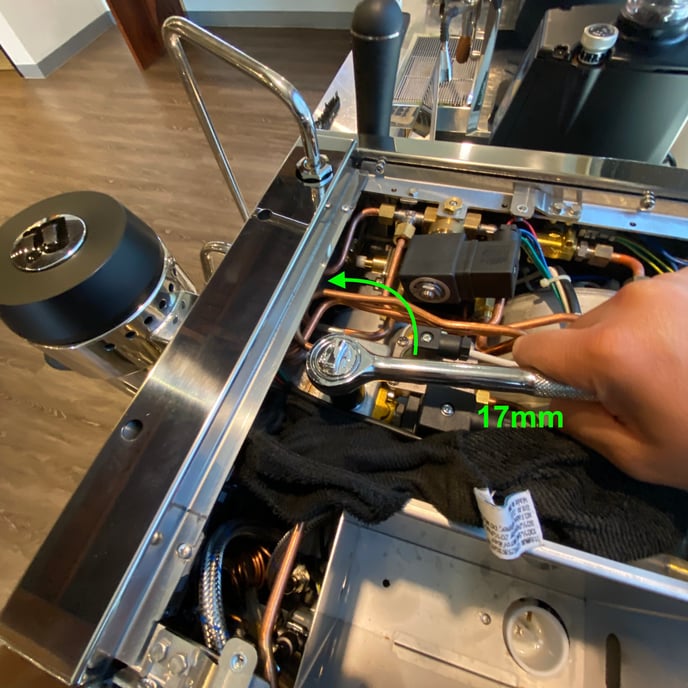
7. Inside of the gigleur housing you'll find the mesh gigleur filter. Inspect the filter for scale build-up or other debris. Clean or replace the filter as necessary.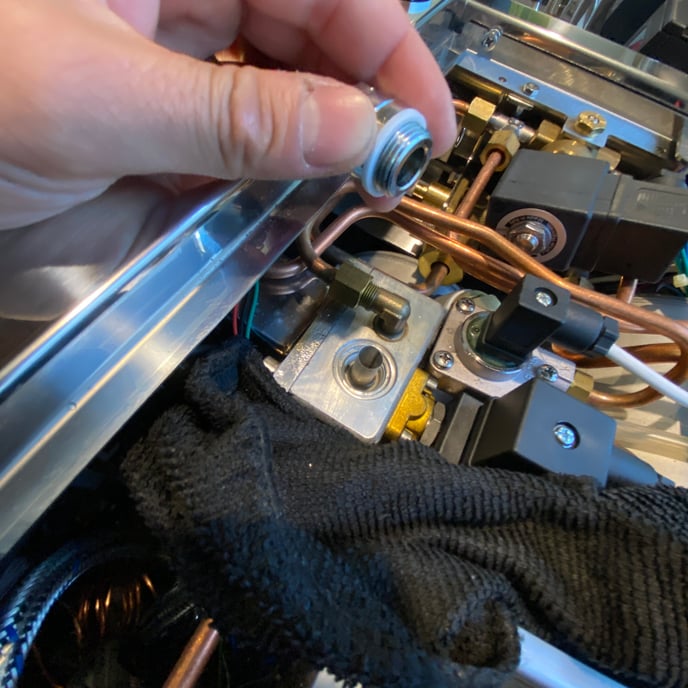
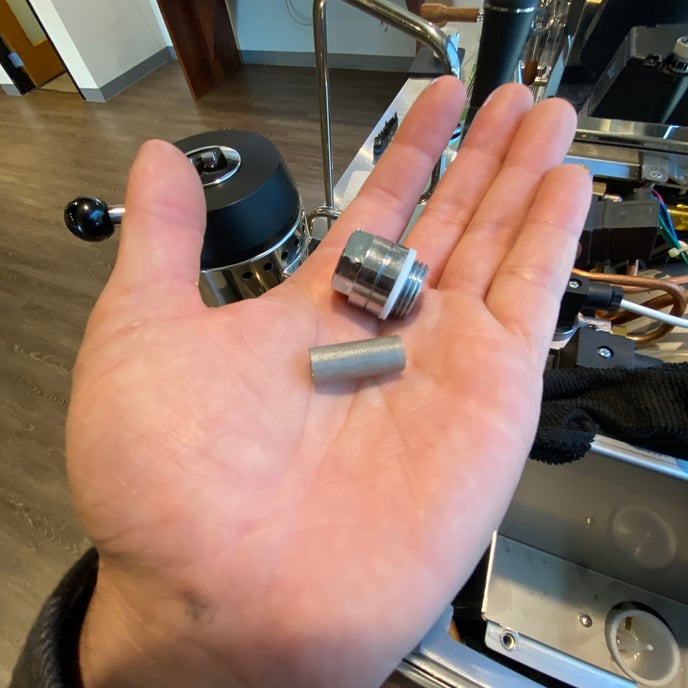
8. Peek down into the gigleur housing to identify the group head gigleur. Use the 7mm socket to unscrew the gigleur and remove it from the housing.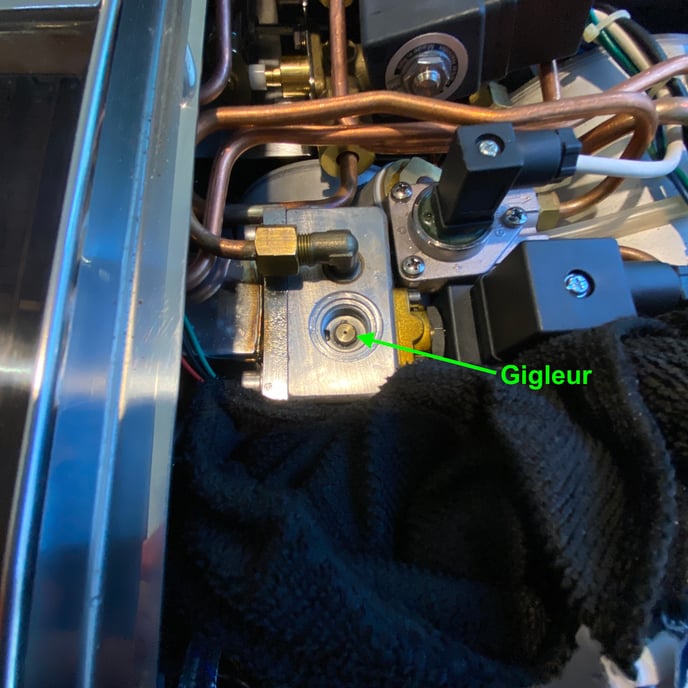
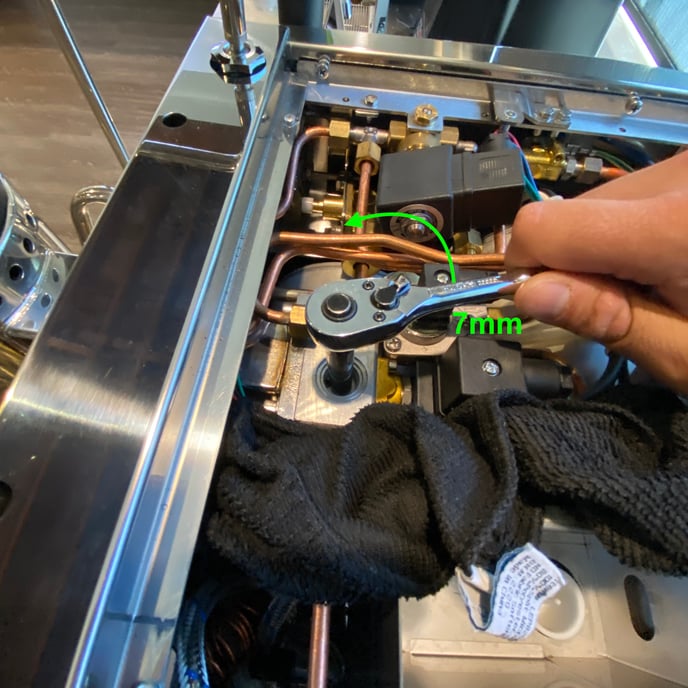
9. Inspect the gigleur for any scale build-up or any debris. Clean off any external build up with a wire brush or scouring pad.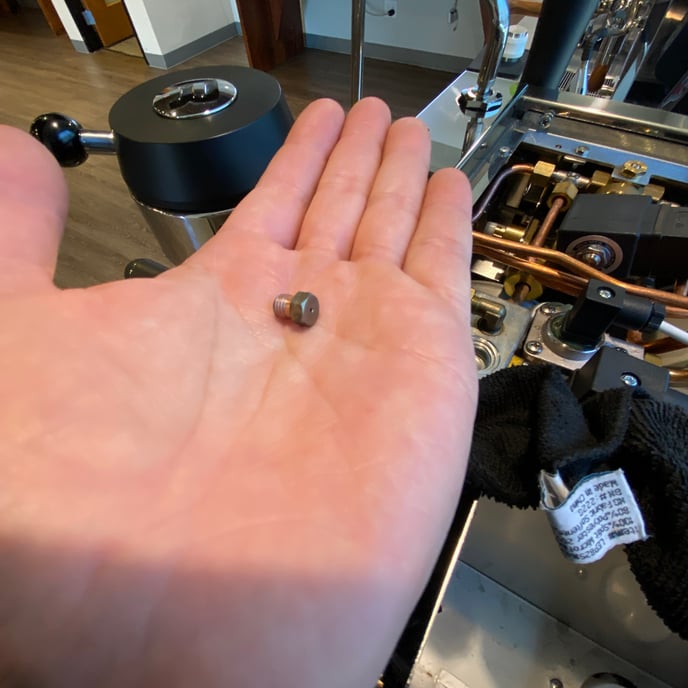
10. Make sure that the passage through the gigleur is clear. You may need to soak the gigleur.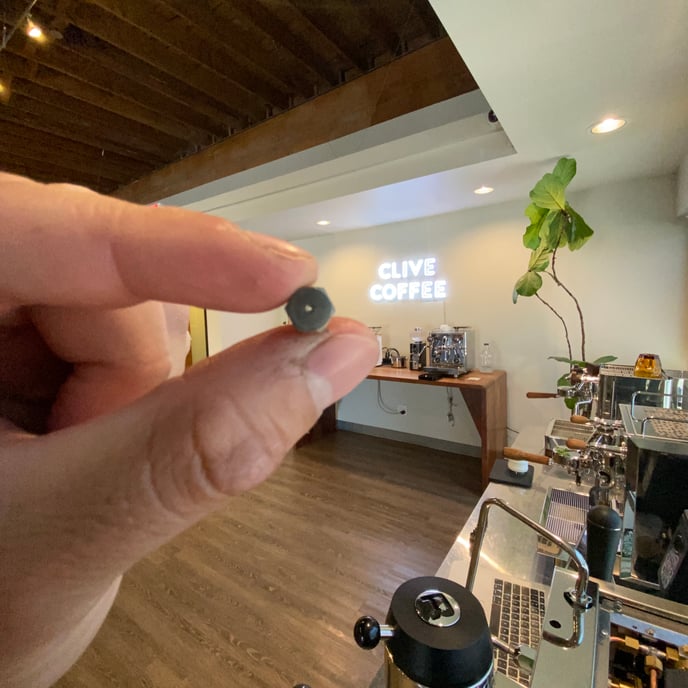
11. Don't forget to clean any build-up or debris out of the gigleur housing.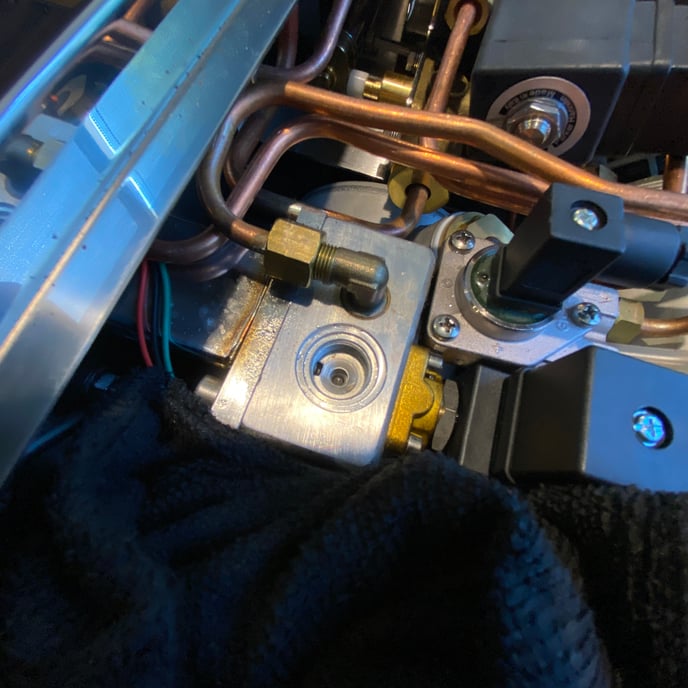
12. Once you've verified that the group head gigleur and gigleur housing are clear and free of build-up, reassemble the machine by following these directions in reverse.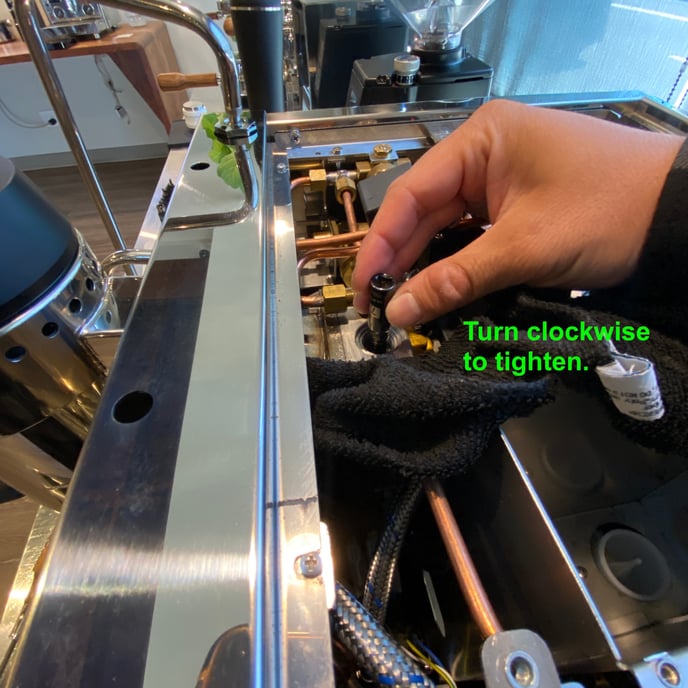
NOTE: The gigleur is delicate and can be damaged if over-tightened. When reinstalling the gigleur, remove the handle of the socket wrench and turn the socket by hand. The gigleur only needs to be hand tight.